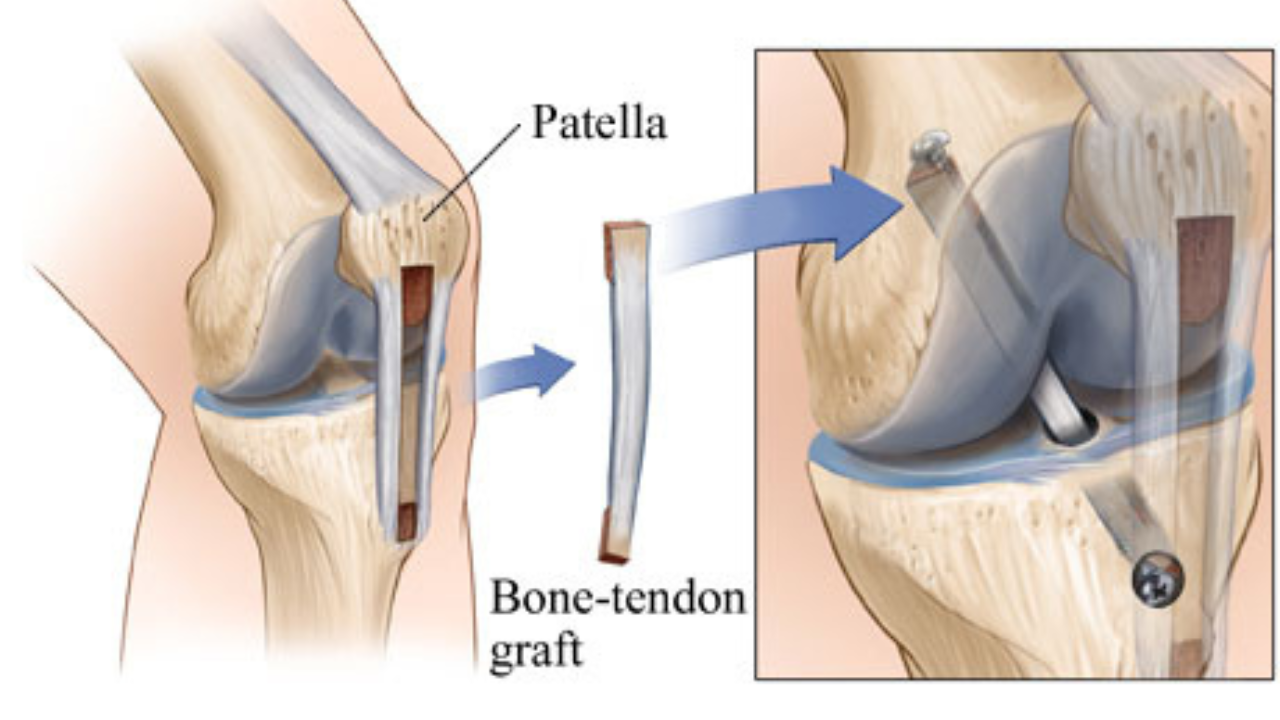
One of the most important considerations patients and doctors must make while undergoing ACL (Anterior Cruciate Ligament) reconstruction surgery is deciding between an autograft and an allograft. You can choose an option that best suits your needs and recovery objectives by being aware of the benefits and drawbacks of each.
Understanding ACL Reconstruction
Reconstruction is frequently the best option for people who want to resume an active lifestyle after suffering an ACL injury, which is one of the most prevalent sports-related injuries. A tear in the important ligament that maintains the knee, the ACL, may severely affect functioning and standard of life.
A graft is used to repair the injured ligament during ACL reconstruction surgery. The graft may be obtained from an outside donor (allograft) or the patient themselves (autograft). Each approach has advantages and disadvantages of its own, and the patient’s activity level, age, and particular requirements will all play a role in which the method is selected.
Autograft: Using Your Own Tissue
During an autograft, the patient’s own tissue is used to replace the injured ACL. The hamstring, quadriceps, and the patellar tendon are the most often used sources of autografts.
Benefits of Autografting:
Reduced Risk of Disease Transmission: There is essentially no chance of spreading infections or diseases because the tissue is taken from the patient’s own body.
Improved Graft Integration: Autografts usually undergo speedier integration and healing because the body accepts them more easily.
Proven Track Record: Autografts have demonstrated improved outcomes and a lower chance of graft failure for numerous active people, especially in sports.
Consideration
Donor Site Morbidity: When tissue from one area of the body is removed, it may cause pain, weakness, or other issues at the donor site.
Longer Surgery and Recovery Period: Although long-term recovery may resemble that of allografts, harvesting the graft can lengthen both the surgical procedure and the early phase of recovery.
To find out if an autograft is the best option for you if you’re thinking about ACL ligament repair surgery in Delhi and want a customized procedure, consult with the top ligament surgeon in Delhi.
Utilising Donor Tissue in Allograft
An allograft replaces an injured ACL with tissue from a donor, usually a deceased person. This technique is gaining popularity, particularly with patients who would rather not have the additional surgery needed for autograft harvesting.
Advantages of Allografting:
Shorter Surgery Time: Because the tissue has already been removed, the surgery takes less time overall, and less time is spent under anaesthesia.
No Donor Site Mortality: There is no chance of issues at another location on the body if tissue cannot be removed from the patient.
Reduced Postoperative Pain: Because there isn’t a secondary incision from graft harvesting, patients may feel less pain after surgery.
Consideration:
Risk of Disease Transmission: Despite rigorous screening and sterilization procedures, there is a small chance of disease transmission with allografts, although it is extremely rare.
Reduced Graft Integration: Allografts may require a bit longer to fully integrate into the patient’s body, which could result in a slightly longer rehabilitation period.
Increased Graft Failure Risk: Allografts have occasionally been linked to an increased failure risk, especially in younger, more active persons.
To ensure an optimal result, it’s crucial to choose a specialist with substantial expertise in this field if you’re looking for the best ACL surgeon in Delhi to talk about your allograft possibilities.
Making the Appropriate Decision
Several criteria must be considered while choosing between autograft and allograft. Due to their strength and longevity, autografts may be more beneficial for younger, more active, or sports-related patients. Conversely, patients who would rather have a shorter procedure or who are older and less active may be more likely to get an allograft.
The optimum plan of treatment for your ACL reconstruction surgery in Delhi will be recommended by your surgeon after considering factors such as your age, degree of activity, and general health. The outcome of the procedure depends greatly on the surgeon’s skill, regardless of whether you select an autograft or an allograft. For individualized guidance that is suitable for your particular situation, you must speak with the top ACL ligament surgeon in Delhi.
Conclusion
With their respective benefits and drawbacks, autografts and allografts are both workable options for ACL restoration. You and your surgeon should mutually make the decision, carefully taking into account your goals, way of life, and any possible risks.
It’s crucial to explore the advantages and disadvantages of each option in-depth with your surgeon if you’re planning Ligament Reconstruction Surgery in Delhi. A good recovery and a return to an active life are dependent upon selecting the appropriate surgeon, irrespective of whether an autograft or an allograft is chosen.
Make sure the surgeon doing the surgery has the knowledge and expertise necessary to lead you through the procedure and assist you in getting the optimum result. You’re laying the groundwork for a seamless procedure and a full recovery by choosing the top ACL ligament surgeon in Delhi.